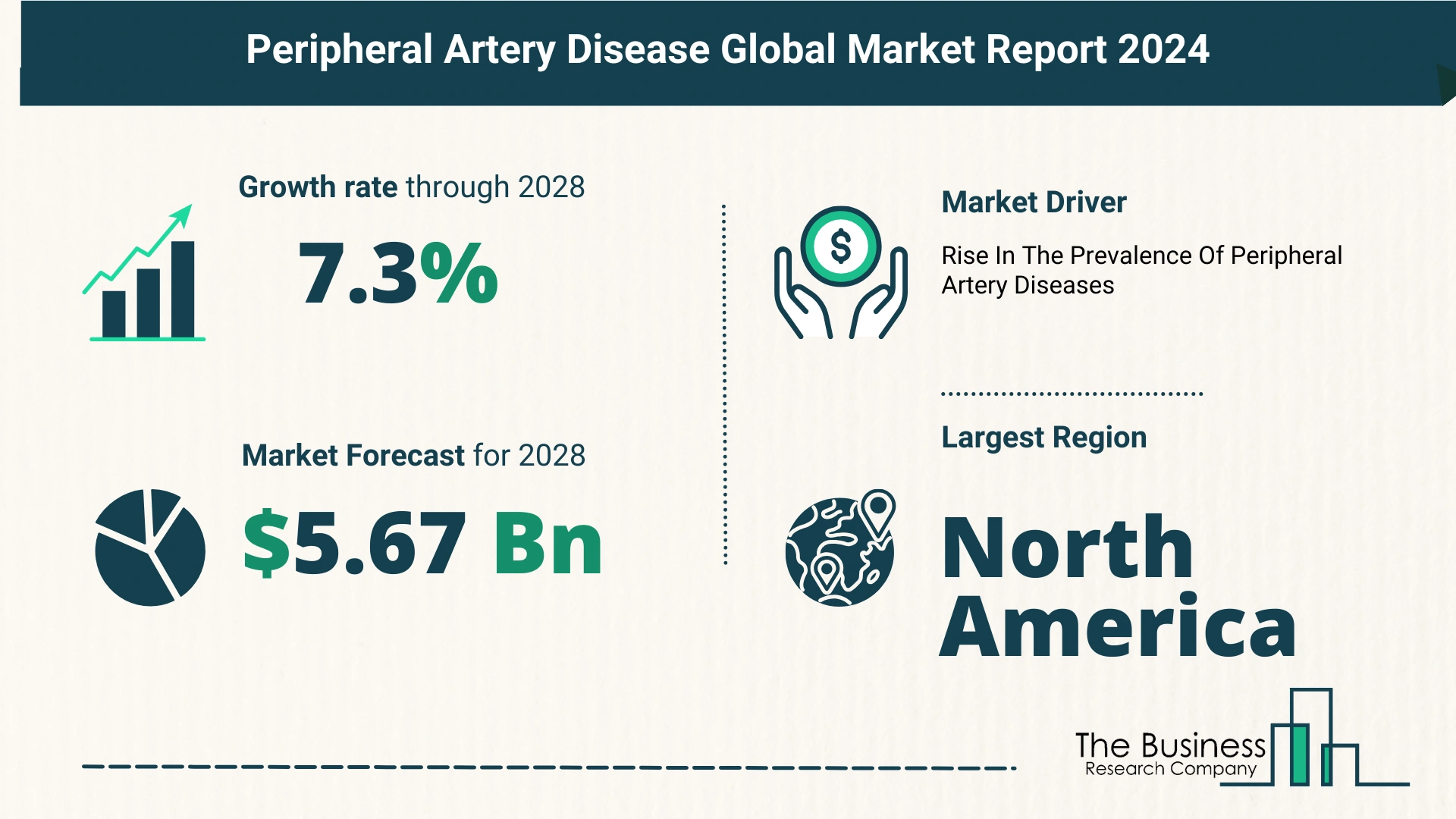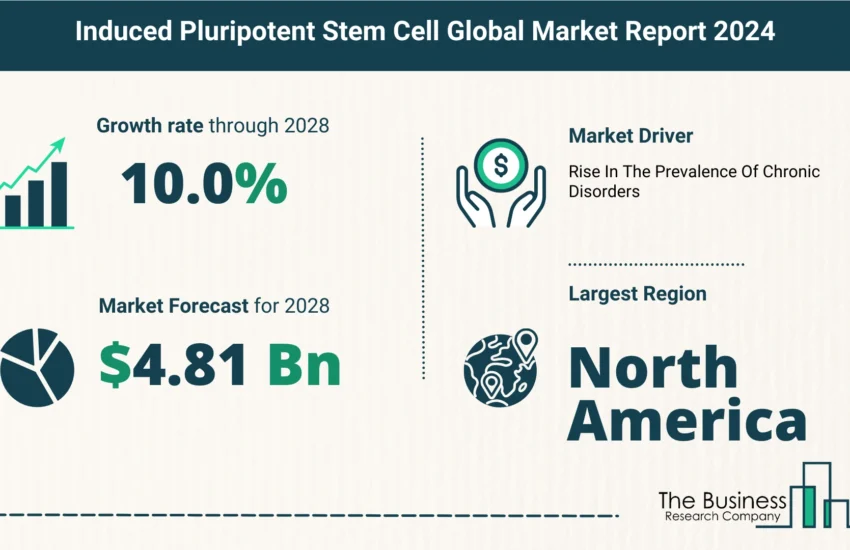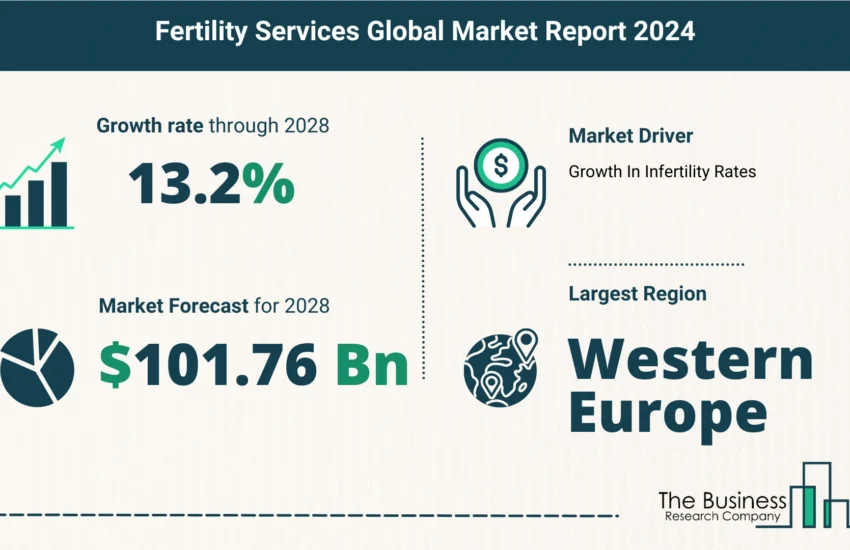Key Insights On The Peripheral Artery Disease Market 2024 – Size, Driver, And Major Players
The Business Research Company’s global market reports are now updated with the latest market sizing information for the year 2024 and forecasted to 2033
As per The Business Research Company’s Peripheral Artery Disease Global Market Report 2024, the peripheral artery disease market is expected to show significant growth in the forecast period.
The peripheral artery disease market has witnessed robust growth in recent years, reflecting a trajectory set for continuous expansion. From its valuation at $3.97 billion in 2023, it is projected to escalate to $4.28 billion in 2024, with a compound annual growth rate (CAGR) of 7.9%. This upward trend is fueled by various factors contributing to its evolution and prominence.
- Understanding the Growth Drivers
- Increasing Prevalence and Risk Factors
- PAD’s prevalence surged from 11.3 million in 1995 to 21 million in 2020, expected to reach 23.8 million by 2030.
- Aging population, lifestyle changes, and other risk factors amplify the disease’s prevalence.
- Clinical Research and Evidence-based Medicine
- Advancements in medical research enhance understanding and treatment efficacy.
- Evidence-based approaches drive innovation in treatment modalities.
- Awareness and Screening Programs
- Heightened awareness campaigns lead to early detection and intervention.
- Screening initiatives contribute to improved patient outcomes.
- Government Healthcare Initiatives
- Supportive policies and funding bolster research, development, and accessibility of treatments.
- Government initiatives prioritize PAD management and prevention.
- An Outlook into the Future
- Patient-centric Care and Innovation
- Focus on personalized treatment approaches enhances patient outcomes.
- Technological innovations cater to individual patient needs and preferences.
- Advancements in Minimally Invasive Procedures
- Minimally invasive techniques reduce patient discomfort and recovery time.
- Enhanced efficacy and safety drive adoption among patients and healthcare providers.
- Digital Health and Remote Monitoring
- Integration of digital solutions facilitates remote monitoring and management.
- Remote monitoring ensures continuity of care and early intervention.
- Health Equity Initiatives
- Efforts to address healthcare disparities ensure access to quality care for all.
- Equity-focused strategies promote inclusivity and improve health outcomes.
- Shift to Outpatient Settings
- Outpatient settings offer convenience, cost-effectiveness, and patient-centered care.
- Shift minimizes hospitalization rates and enhances patient experience.
View More On The Peripheral Artery Disease Market Report 2024 – https://www.thebusinessresearchcompany.com/report/peripheral-artery-disease-global-market-report
Technological Innovations: Revolutionizing PAD Treatment
Technological advancements serve as a cornerstone in the evolution of PAD treatment, fostering innovation and efficacy in patient care.
- Evolution of Treatment Modalities
- Introduction of Advanced Catheter Systems
- Genesis MedTech Group introduces Chocolate Touch paclitaxel DCB catheter, revolutionizing treatment options.
- Next-generation angioplasty platforms offer superior efficacy and drug delivery.
- Acquisition-driven Expansion
- Abbott Laboratories’ acquisition of Cardiovascular Systems Inc. enriches PAD treatment portfolio.
- Innovative atherectomy systems augment treatment options and efficacy.
Market Segmentation and Regional Outlook
The peripheral artery disease market encompasses diverse segments and exhibits regional variations in growth and adoption rates.
- Market Segmentation
- Types of Treatments
- Peripheral angioplasty balloons, stents, catheters, and other devices cater to varied patient needs.
- Diverse drug options offer comprehensive management strategies.
- Routes of Administration
- Oral, parenteral, and alternative routes ensure flexibility and patient convenience.
- End Users
- Hospitals, specialty clinics, and other facilities contribute to comprehensive care delivery.
- Regional Dynamics
- Dominance of North America
- North America leads the PAD market, driven by technological innovation and healthcare infrastructure.
- Asia-Pacific emerges as a fast-growing region, propelled by increasing disease prevalence and healthcare investments.
In conclusion, the trajectory of the peripheral artery disease market reflects a landscape characterized by innovation, patient-centric care, and concerted efforts to address healthcare disparities. With technological advancements, strategic acquisitions, and a focus on comprehensive care delivery, the market is poised for sustained growth and evolution, ensuring improved outcomes for PAD patients worldwide.
Request A Sample Of The Global Peripheral Artery Disease Market Report 2024:
https://www.thebusinessresearchcompany.com/sample_request?id=12068&type=smp



